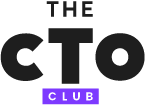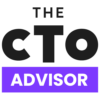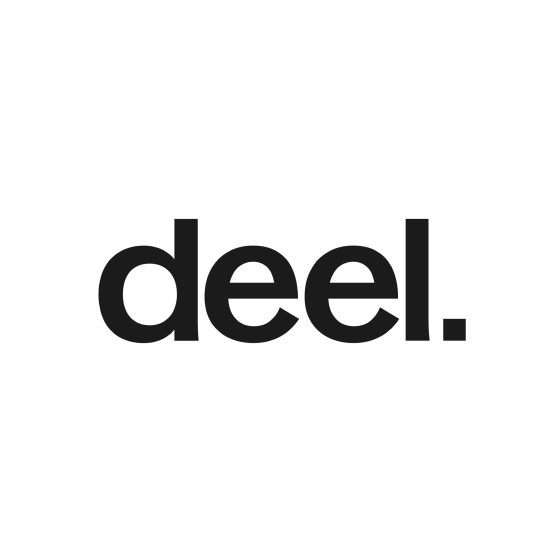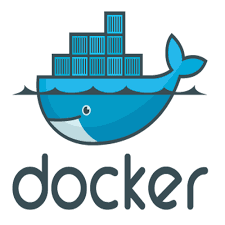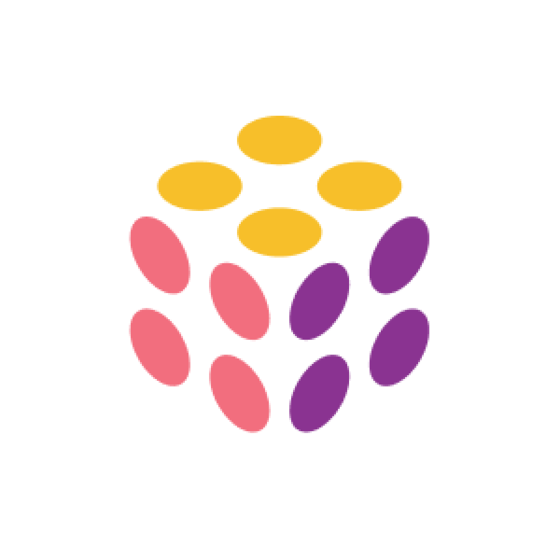Best IT Procurement Software Shortlist
Here’s my shortlist of the best IT procurement software:
Our one-on-one guidance will help you find the perfect fit.
If you’ve ever been caught off guard by a surprise audit, overspent on licenses nobody’s using, or had to untangle a renewal mess across teams, you know how painful software license management can get. When usage data lives in spreadsheets or across multiple platforms, it’s easy to lose visibility and control.
License management software helps your team centralize tracking, prevent compliance risks, and avoid unnecessary spending. With the right tool, you can automate renewals, get alerts before licenses expire, and understand exactly how your software is being used across the organization.
I’ve worked closely with teams managing SaaS stacks of all sizes, helping them clean up license sprawl and choose systems that actually improve visibility. In this guide, I’ll share the tools that stand out—not just for their features, but for how well they solve real licensing headaches.
Why Trust Our Software Reviews
We’ve been testing and reviewing SaaS development software since 2023. As tech experts ourselves, we know how critical and difficult it is to make the right decision when selecting software. We invest in deep research to help our audience make better software purchasing decisions.
We’ve tested more than 2,000 tools for different SaaS development use cases and written over 1,000 comprehensive software reviews. Learn how we stay transparent & check out our software review methodology.
Best IT Procurement Software Summary
| Tool | Best For | Trial Info | Price | ||
|---|---|---|---|---|---|
| 1 | Best for global workforce | Free trial + demo available | From $29/month | Website | |
| 2 | Best for small businesses | Free trial available | From $499/month | Website | |
| 3 | Best for budget management | Free demo available | Pricing upon request | Website | |
| 4 | Best for supply chain | Free demo available | Pricing upon request | Website | |
| 5 | Best for large enterprises | Free demo available | From $50/month | Website | |
| 6 | Best for AI-driven insights | Free demo available | Pricing upon request | Website | |
| 7 | Best for SaaS procurement | Free demo available | From $25,000/year | Website | |
| 8 | Best for invoice automation | Free demo available | Pricing upon request | Website | |
| 9 | Best for the hospitality industry | Not available | Pricing upon request | Website | |
| 10 | Best for custom workflows | Free demo available | Pricing upon request. | Website |
-

Docker
Visit WebsiteThis is an aggregated rating for this tool including ratings from Crozdesk users and ratings from other sites.4.6 -

Pulumi
Visit WebsiteThis is an aggregated rating for this tool including ratings from Crozdesk users and ratings from other sites.4.8 -

GitHub Actions
Visit Website
Best IT Procurement Software Reviews
Below are my detailed summaries of the best IT procurement software that made it onto my shortlist. My reviews offer a detailed look at the key features, pros & cons, integrations, and ideal use cases of each tool to help you find the best one for you.
Deel is a device lifecycle management solution that reduces IT costs and caters to a global workforce. It helps companies manage device procurement, distribution, and collection efficiently.
Why I picked Deel: It excels in supporting international teams by providing a unified platform for device management across multiple countries. Features like seamless onboarding of new employees, managing loaner devices, and efficient collection of equipment from departing staff set it apart. The platform also ensures minimal downtime with its 24/7 hardware support and managed repairs, aligning perfectly with its USP for global workforce management.
Standout features & integrations:
Features include efficient onboarding of new hires, centralized management of device repairs and storage, and a streamlined process for device procurement from various suppliers. It also offers 24/7 support and loaner devices to minimize downtime.
Integrations include BambooHR, Workday, Rippling, Greenhouse, Lever, NetSuite, Xero, QuickBooks, Expensify, and Gusto.
Pros and cons
Pros:
- Centralized lifecycle tasks
- 24/7 hardware support
- Supports global device management
Cons:
- Limited customization options
- Complex for small teams
New Product Updates from Deel

Deel Launches Anytime Pay Beta for Daily Earnings Access
Deel introduced an Anytime Pay beta, allowing EOR workers with Deel Cards to withdraw earned pay daily. Automatic tax and ledger updates are included, with PEO and Global Payroll support coming soon. More details at Deel Blog.
Precoro is a procurement management software for small businesses to streamline purchasing processes and control spending. It supports functions like purchase order management, budget tracking, and supplier management.
Why I picked Precoro: It offers a user-friendly interface that simplifies procurement for small businesses. Features like real-time budget tracking, automated purchase order creation, and approval workflows make it ideal for teams with limited resources. The software's intuitive dashboard provides quick access to financial data, helping you make informed purchasing decisions. Its focus on efficiency and control aligns perfectly with the needs of small businesses.
Standout features & integrations:
Features include real-time budget tracking, automated purchase order creation, and customizable approval workflows. The intuitive dashboard makes it easy for your team to access financial data quickly. You can also generate insightful reports to improve purchasing decisions.
Integrations include QuickBooks, Xero, NetSuite, Microsoft Dynamics, Oracle, SAP, Slack, Google Workspace, Microsoft Office, and Dropbox.
Pros and cons
Pros:
- Supports multi-currency transactions
- Real-time budget insights
- Customizable reporting tools
Cons:
- Basic user interface design
- Limited advanced features
Spendflo is for businesses focused on optimizing budget management and expense tracking. It helps finance teams streamline their purchasing processes and maintain control over their spending.
Why I picked Spendflo: Its targeted focus on budget management makes it ideal for companies looking to gain financial transparency. Spendflo offers real-time expense tracking, automated approval workflows, and detailed spending analytics. These features help you monitor and control expenses effectively. The platform's ability to provide insights into spending patterns aligns with its USP for budget management.
Standout features & integrations:
Features include automated approval workflows that save time and reduce errors. The platform offers detailed spending analytics to help you understand where your money goes. Spendflo also provides customizable reporting tools to tailor insights to your needs.
Integrations include QuickBooks, Xero, NetSuite, Slack, Microsoft Teams, Google Workspace, Salesforce, HubSpot, Asana, and Trello.
Pros and cons
Pros:
- Real-time expense tracking
- Customizable reporting tools
- Detailed spending analytics
Cons:
- Occasional data sync issues
- Steep learning curve
GEP SMART is an end-to-end procurement platform optimizing a business’s supply chain operations. It supports functions such as spend analysis, sourcing, and contract management.
Why I picked GEP SMART: Its comprehensive approach to supply chain management makes it a valuable tool for businesses looking to enhance their procurement processes. The platform offers a unified interface for managing sourcing activities and provides advanced analytics for data-driven decision-making. With features like contract lifecycle management and supplier collaboration tools, it helps your team maintain control over procurement activities. GEP Smart's focus on supply chain efficiency aligns with its USP for supply chain management.
Standout features & integrations:
Features include advanced spend analysis that helps identify cost-saving opportunities. The platform provides contract lifecycle management tools to streamline contract creation and execution. Supplier collaboration features enhance communication and negotiation with vendors.
Integrations include SAP, Oracle, Microsoft Dynamics, Salesforce, Coupa, Ariba, NetSuite, JD Edwards, Infor, and Workday.
Pros and cons
Pros:
- Efficient contract management
- Advanced spend analysis
- Comprehensive supply chain tools
Cons:
- High implementation effort
- Complex user interface
SAP Ariba is a procurement solution for large enterprises, offering extensive capabilities in spend management and supplier collaboration. It helps organizations streamline procurement processes, manage supplier relationships, and ensure compliance across their operations.
Why I picked SAP Ariba: It caters to the complex needs of large enterprises with its extensive features for managing supplier networks and procurement activities. The platform offers comprehensive spend visibility and control, which is crucial for large-scale operations. It ensures efficient procurement practices with its supplier lifecycle management and contract management. Its scalability and adaptability make it an ideal choice for large organizations.
Standout features & integrations:
Features include comprehensive spend visibility that helps your team control expenditures. Supplier lifecycle management tools streamline interactions with vendors. The platform also offers contract management features to ensure compliance and efficiency in procurement.
Integrations include SAP S/4HANA, Oracle, Microsoft Dynamics, Salesforce, NetSuite, JD Edwards, Infor, IBM, Google Cloud, and AWS.
Pros and cons
Pros:
- Efficient contract management
- Extensive supplier management
- Comprehensive spend visibility
Cons:
- Requires technical expertise
- Complex configuration
Zycus is aimed at businesses seeking AI-driven insights to enhance their procurement processes. It serves organizations looking to improve spend management, supplier management, and procurement analytics.
Why I picked Zycus: It offers advanced AI capabilities that provide actionable insights into procurement activities. The platform features spend analysis tools that help identify cost-saving opportunities. Supplier management features streamline vendor interactions and improve collaboration. Zycus's focus on leveraging AI for data-driven decision-making aligns with its USP for AI-driven insights.
Standout features & integrations:
Features include spend analysis tools that help your team identify savings opportunities. The platform provides procurement analytics to improve decision-making. You can also manage supplier performance with its supplier management features.
Integrations include SAP, Oracle, Microsoft Dynamics, Salesforce, NetSuite, JD Edwards, Infor, Ariba, IBM, and Coupa.
Pros and cons
Pros:
- Effective spend analysis
- Advanced AI capabilities
- Actionable procurement insights
Cons:
- Requires technical expertise
- Complex implementation process
Vendr helps companies manage software purchases and renewals. It serves procurement and finance teams by offering tools to handle vendor relationships, analyze contracts, and oversee software spending.
Why I picked Vendr: It provides access to pricing benchmarks, contract analysis, and negotiation support. The platform includes tools for managing software subscriptions, tracking renewals, and facilitating communication between buyers and vendors. Additionally, it offers functionalities for evaluating software usage and identifying cost-saving opportunities, which can help your team optimize software spending.
Standout features & integrations:
Features include tools for managing procurement requests, which can help your team handle intake processes more efficiently. The platform also offers capabilities for analyzing spend data, allowing you to gain insights into your procurement activities.
Integrations include Salesforce, Slack, NetSuite, Workday, Coupa, SAP Ariba, Okta, Microsoft Teams, Jira, and ServiceNow.
Pros and cons
Pros:
- Supports negotiation assistance
- Provides access to pricing benchmarks
- Offers contract analysis tools
Cons:
- Customization options might be limited
- Some features might need technical knowledge
Basware focuses on automating invoice processing for businesses looking to streamline their accounts payable operations. It serves organizations aiming to enhance efficiency in invoice management and payment processes.
Why I picked Basware: It specializes in automating invoice-related tasks, making it a strong choice for businesses needing efficient invoice processing. The platform provides features like electronic invoice capture and automated workflows. These functionalities help your team reduce manual intervention and increase processing speed. Basware's focus on invoice automation aligns with its USP, making it ideal for companies with high invoice volumes.
Standout features & integrations:
Features include electronic invoice capture that simplifies data entry and reduces errors. The platform offers automated workflows to streamline approval processes and improve efficiency. You can also benefit from real-time visibility into invoice status and payment schedules.
Integrations include SAP, Oracle, Microsoft Dynamics, NetSuite, Salesforce, JD Edwards, Infor, Workday, IBM, and QuickBooks.
Pros and cons
Pros:
- Ideal for high invoice volumes
- Efficient invoice automation
- Real-time invoice visibility
Cons:
- Requires training for users
- Complex implementation process
BirchStreet manages procurement processes across various industries. It serves procurement and finance teams by offering tools that cover purchasing, invoicing, and inventory management.
Why I picked BirchStreet: BirchStreet offers features that assist in managing procurement activities, tracking expenses, and overseeing supplier relationships. The platform provides functionalities for analyzing procurement data, which can help your team make informed decisions. It also includes tools for handling purchase orders, processing invoices, and managing inventory levels.
Standout features & integrations:
Features include tools for managing procurement requests, which can help your team handle intake processes more efficiently. The platform also offers capabilities for analyzing spend data, allowing you to gain insights into your procurement activities.
Integrations include SAP, Oracle, NetSuite, Workday, Microsoft Dynamics, Salesforce, QuickBooks, Xero, JD Edwards, and PeopleSoft.
Pros and cons
Pros:
- Provides functionalities for recipe management
- Supports multi-property procurement management
- Offers tools for inventory tracking
Cons:
- Some features might need technical knowledge
- User interface may not suit all users
SynerTrade supports organizations seeking customizable procurement workflows. It caters to businesses looking to tailor their procurement processes to specific needs and requirements.
Why I picked SynerTrade: It offers flexibility in creating custom workflows that adapt to your team's procurement strategies. Features like configurable approval processes and personalized dashboards enhance the user experience. The platform provides tools for spend analysis and supplier management, aligning with unique business requirements. Its ability to tailor functionalities ensures that your procurement processes are as efficient and effective as possible.
Standout features & integrations:
Features include configurable approval processes that let your team tailor workflows to specific needs. The platform offers personalized dashboards for a better user experience. Spend analysis tools help identify cost-saving opportunities and improve procurement strategies.
Integrations include SAP, Oracle, Microsoft Dynamics, Salesforce, NetSuite, JD Edwards, Infor, IBM, Google Cloud, and AWS.
Pros and cons
Pros:
- Configurable approval processes
- Highly customizable workflows
- Personalized user dashboards
Cons:
- Occasional performance issues
- Complex setup process
Other IT Procurement Software
Here are some additional IT procurement software options that didn’t make it onto my shortlist, but are still worth checking out:
- Ivalua
For supplier management
- Oracle Fusion Cloud Procurement
For cloud solutions
- Jaggaer
For research institutions
- Coupa
For spend visibility
- Procurify
For budget control
- Pipefy
For process customization
- Kissflow Procurement Cloud
For workflow automation
- Tradogram
For scalable purchasing control
- Tradeshift
For global trade
- Transcepta
For invoice processing
- Bellwether
For inventory management
- BuyerQuest
For procurement marketplace
- inFlow
For inventory control
- Fraxion
For expense management
- Spendwise
For cost tracking
IT Procurement Software Selection Criteria
When selecting the best IT procurement software to include in this list, I considered common buyer needs and pain points like managing supplier relationships and controlling costs. I also used the following framework to keep my evaluation structured and fair:
Core Functionality (25% of total score)
To be considered for inclusion in this list, each solution had to fulfill these common use cases:
- Manage supplier relationships
- Automate purchase orders
- Track spending and budgets
- Ensure compliance and reporting
- Integrate with financial systems
Additional Standout Features (25% of total score)
To help further narrow down the competition, I also looked for unique features, such as:
- Customizable approval workflows
- Advanced spend analytics
- Supplier performance tracking
- AI-driven insights
- Mobile procurement capabilities
Usability (10% of total score)
To get a sense of the usability of each system, I considered the following:
- Intuitive user interface
- Easy navigation and accessibility
- Minimal learning curve
- Customizable dashboards
- Consistency across devices
Onboarding (10% of total score)
To evaluate the onboarding experience for each platform, I considered the following:
- Availability of training videos
- Access to interactive product tours
- Presence of onboarding webinars
- Availability of chatbots for support
- Comprehensive onboarding templates
Customer Support (10% of total score)
To assess each software provider’s customer support services, I considered the following:
- 24/7 customer support availability
- Access to a dedicated account manager
- Availability of live chat support
- Comprehensive knowledge base
- Timely response to inquiries
Value For Money (10% of total score)
To evaluate the value for money of each platform, I considered the following:
- Competitive pricing plans
- Flexible subscription options
- Transparent pricing structure
- Discounts for annual billing
- Inclusion of essential features in base plan
Customer Reviews (10% of total score)
To get a sense of overall customer satisfaction, I considered the following when reading customer reviews:
- Recommendations from similar businesses
- Positive feedback on functionality
- High ratings for customer support
- User satisfaction with ease of use
- Consistency in performance reviews
How to Choose IT Procurement Software
It’s easy to get bogged down in long feature lists and complex pricing structures. To help you stay focused as you work through your unique software selection process, here’s a checklist of factors to keep in mind:
| Factor | What to Consider |
| Scalability | Ensure the software can grow with your business. Consider if it can handle an increasing number of users, transactions, and data volume without compromising performance. |
| Integrations | Check if it integrates with your existing systems like ERP, accounting, and CRM. This will save time and reduce errors in data transfer. |
| Customizability | Look for software that allows you to tailor workflows and features to fit your team's specific processes and requirements. |
| Ease of Use | Evaluate the user interface and navigation. Your team should be able to use it without extensive training, ensuring quick adoption. |
| Budget | Consider not just the upfront cost but also the total cost of ownership, including implementation, training, and ongoing support expenses. |
| Security Safeguards | Assess the software's security measures, such as data encryption and compliance with industry standards, to protect your sensitive procurement data. |
| Vendor Support | Check the level of support offered, including availability of live chat, phone support, and dedicated account managers to assist your team when needed. |
| Feature Set | Identify must-have features that address your team's pain points, such as automated purchase orders, spend tracking, and supplier management. |
What Is IT Procurement Software?
IT procurement software is a tool used to manage and automate the purchasing process within an organization. Professionals like procurement managers, finance teams, and IT departments use these tools to enhance efficiency and control costs.
Its automated purchase orders, spend tracking, and supplier management features help with managing procurement activities effectively. Overall, these tools provide value by improving accuracy, saving time, and ensuring compliance in the procurement process.
Features of IT Procurement Software
When selecting IT procurement software, keep an eye out for the following key features:
- Automated purchase orders: Streamlines the ordering process by automatically generating purchase orders, reducing manual entry and errors.
- Spend tracking: Monitors and reports on spending patterns to help control costs and manage budgets effectively.
- Supplier management: Manages supplier relationships and performance, ensuring you get the best value and service.
- Customizable workflows: Allows you to tailor procurement processes to fit your team's specific needs and requirements.
- Integration capabilities: Connects with existing systems like ERP and CRM for seamless data flow and reduced duplication of efforts.
- Budget control: Provides tools to set and monitor budgets, preventing overspending and ensuring financial compliance.
- Security safeguards: Protects sensitive procurement data with encryption and compliance with industry standards.
- User-friendly interface: Ensures easy navigation and quick adoption by your team, minimizing training time.
- Real-time analytics: Offers insights into procurement activities and performance, enabling data-driven decision-making.
- Compliance management: Ensures that procurement processes adhere to regulatory requirements and internal policies.
Benefits of IT Procurement Software
Implementing IT procurement software provides several benefits for your team and your business. Here are a few you can look forward to:
- Cost savings: Automated purchase orders and spend tracking help reduce unnecessary expenses and control budgets.
- Improved efficiency: Customizable workflows and integration capabilities reduce manual tasks and speed up procurement processes.
- Better supplier relationships: Supplier management features ensure consistent communication and performance tracking, leading to stronger partnerships.
- Enhanced compliance: Compliance software tools ensure adherence to regulatory requirements and internal policies, reducing risks.
- Informed decision-making: Real-time analytics provide insights into procurement activities, enabling data-driven strategies.
- Increased security: Security safeguards protect sensitive data, ensuring your procurement information remains confidential and secure.
- User satisfaction: A user-friendly interface makes it easy for your team to adopt the software and quickly benefit from its functionalities.
Costs and Pricing of IT Procurement Software
Selecting IT procurement software requires an understanding of the various pricing models and plans available. Costs vary based on features, team size, add-ons, and more. The table below summarizes common plans, their average prices, and typical features included in IT procurement software solutions:
Plan Comparison Table for IT Procurement Software
| Plan Type | Average Price | Common Features |
| Free Plan | $0 | Basic purchase order creation, limited supplier management, and basic reporting. |
| Personal Plan | $5-$25/ user/month | Purchase order automation, spend tracking, basic integrations, and simple budget controls. |
| Business Plan | $30-$60/ user/month | Advanced supplier management, customizable workflows, enhanced analytics, and compliance management. |
| Enterprise Plan | $70-$150/ user/month | Full integration capabilities, advanced security safeguards, real-time analytics, and premium support. |
IT Procurement Software: FAQs
Here are some answers to common questions about IT procurement software:
How does software procurement work?
Software procurement involves strategically acquiring software solutions to meet your operational needs and drive business goals. It includes assessing software requirements, evaluating vendors, negotiating contracts, and implementing solutions. This process ensures the software you choose aligns with your team’s objectives and maximizes value.
What are the 5 P's in procurement?
The 5 P’s of procurement—Power, People, Processes, Planning, and Prevention—provide a holistic framework for excellence. Power refers to influence in negotiations, People focus on team roles, Processes ensure efficiency, Planning involves strategy, and Prevention minimizes risks in procurement activities.
What are the 5 R's of procurement?
The 5 R’s of procurement are Right Quality, Right Quantity, Right Place, Right Time, and Right Price. These principles guide procurement decisions to ensure you receive the best value and meet your organization’s needs efficiently and effectively.
How do integrations benefit IT procurement software?
Integrations connect IT procurement software with other systems like ERP, CRM, and accounting tools. This connectivity ensures seamless data flow, reduces manual entry errors, and enhances overall efficiency, allowing your team to focus on strategic tasks rather than administrative ones.
Why is scalability important in IT procurement software?
Scalability ensures that the software can grow with your business. As your organization expands, scalable software can handle increased data, users, and transactions without compromising performance, making it a future-proof investment for your procurement needs.
What role does security play in IT procurement software?
Security safeguards protect sensitive procurement data from breaches and unauthorized access. Ensuring the software complies with industry standards and includes features like data encryption and user authentication helps maintain trust and integrity in your procurement processes.
What's Next?
Boost your SaaS growth and leadership skills.
Subscribe to our newsletter for the latest insights from CTOs and aspiring tech leaders.
We'll help you scale smarter and lead stronger with guides, resources, and strategies from top experts!
